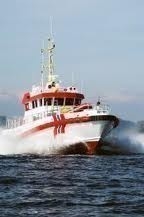New Rules Impact Yachts

Here is a summary of those that will affect new and existing yachts.
U.S. Caribbean Sea Emission Control Area (Jan. 1): The U.S. Caribbean Emission Control Area (ECA) begins enforcement. The area of this ECA includes waters adjacent to coasts of the Commonwealth of Puerto Rico and the U.S. Virgin Islands, up to roughly 50 nautical miles from the territorial sea baselines of the included islands.
The ECA is bounded such that it does not extend into marine areas subject to the sovereignty, sovereign rights or jurisdiction of any state other than the United States. The new standard of 0.1 percent fuel sulfur (1,000 ppm) is expected to reduce airborne particulate matter and sulfur dioxide emissions by more than 85 percent from today’s levels.
Load Line Convention (Jan. 1): This amendment to the International Convention on Load Lines extends the southern limit of the summer zone further south off South Africa. Currently, the traffic corridor through the summer zone off Cape Agulhas is quite narrow. With increased piracy activity to the east of the African continent, there has been a significant increase in vessels using this route.
The southern limit of the load line summer zone will be moved south by 50 miles to provide increased room to ships and yachts passing through this area.
Onboard Stability Computers or Shore-based Support (Jan. 1): SOLAS regulation II-1/8-1 has been amended. It now requires operational information to be provided to the master after a flooding casualty to assist with the decision whether to return to port.
Passenger ships, including passenger yachts carrying more than 12 guests, constructed on or after Jan. 1, 2014, with a length or 120m or more or having three or more main vertical fire zones are to have either (a) an onboard stability computer or (b) shore-based support.
Either option must provide the information given in the supporting guidelines.
Fire Safety Systems (July 1): SOLAS Regulation II-2/10 has added a new paragraph -- 10.4 -- to clarify that a minimum of two two-way portable radiotelephone apparatus for each fire party for firefighter's communication shall be carried on board. These radio devices shall be of an explosion-proof type or intrinsically safe.
Also coming into force on July 1, SOLAS Regulation II-2/15 has added a new paragraph -- 2.2.6 -- to state that cargo ships (i.e., commercial yachts) and passenger ships of 500GT and above shall be provided with either (a) an onboard means of recharging breathing apparatus cylinders used during drills or (b) a suitable number of spare cylinders to replace those used during drills.
Noise Protection: Excessive noise can cause permanent hearing loss, either from a single loud event or from a lower level, long-term exposure. The IMO has existing (non-mandatory) guidance on noise levels on board ships, which is contained in Resolution A.468 (XII) “Code on Noise Levels on Board Ships.”
This has been reviewed to take into consideration developments in noise reduction techniques and noise prediction. Some administrations have introduced national mandatory limits on noise and the IMO has decided that there should be internationally agreed mandatory noise limits. This will affect commercial yachts over 1600GT built from July 1, 2004.
Recovery of Persons from the Water (July 1): New SOLAS Regulation III-17/1 requires all vessels above 500GT to have ship-specific plans and procedures for the recovery of persons from the water. The plans and procedures shall identify the equipment intended to be used for recovery purposes and measures to be taken to minimize the risk to shipboard personnel involved in recovery operations.
This regulation applies to new SOLAS ships constructed on or after July 1, 2014, and to existing ships by the first periodical or renewal safety equipment survey after that date. All commercial yachts above 500GT must ensure that they have plans and procedures onboard showing how the yacht can recover persons from the sea.
Bridge Navigational Watch Alarm System (BNWAS) (July 1): This new piece of equipment will begin to be enforced on yachts of 150GT and greater. The purpose of a bridge navigational watch alarm system is to monitor bridge activity and detect operator disability, which could lead to marine accidents.
The system monitors awareness of the officer of the watch (OOW) and automatically alerts the master or another qualified person if, for any reason, the OOW becomes incapable of performing his/her duties. This purpose is achieved by a series of indications and alarm to alert first the OOW and, if he is not responding, then to alert the master or another qualified person. Additionally, the BNWAS provides the OOW with a means of calling for immediate assistance if required.
Maritime Labour Convention (MLC), 2006: The Maritime Labour Convention will enter into force on various dates during 2014, depending upon the exact signing date for the particular country. MLC will require all commercial yachts to be inspected and certified by its flag state or a classification society appointed on their behalf.
In force dates for the major yachting flags and locations are as follows:
Barbados, June 20
Belgium, Aug. 20
France, Feb. 28
Germany, Aug. 16
Greece, Jan. 4
Italy, Nov. 19
Malta, Jan. 22
South Africa, June 20
United Kingdom, Aug. 7
Gibraltar, Aug.7
Isle of Man, Aug. 7
Capt. Jake DesVergers is chief surveyor for International Yacht Bureau (IYB), an organization that provides flag-state inspection services to yachts on behalf of several administrations. A deck officer graduate of the U.S. Merchant Marine Academy at Kings Point, he previously sailed as master on merchant ships, acted as designated person for a shipping company, and served as regional manager for an international classification society. Contact him at +1 954-596-2728 or www.yachtbureau.org. Comments on this column are welcome at editorial@the-triton.com.
Original story from The Triton
Image courtesy of Wikimedia Commons


Post your comment
You cannot post comments until you have logged in.
Login to post a commentComments
No one has commented on this page yet.
RSS feed for comments on this page | RSS feed for all comments